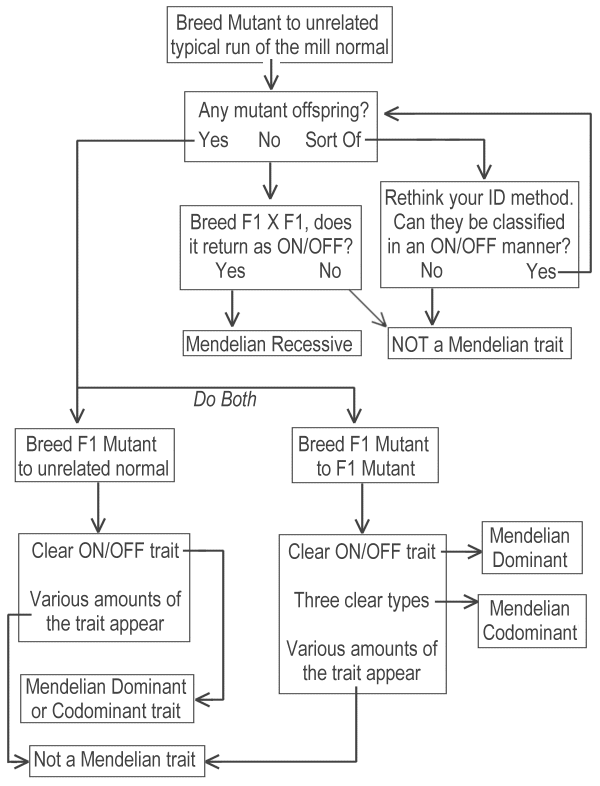 |
||
Determining if a trait is MendelianThis is a section from the Cornsnake Morph Guide which explains the process of proving out a new gene. You can use the flowchart below, or you can answer yes/no type of questions about your test breedings in order to find out how to proceed. If you find an interesting looking specimen at a show or hatch something odd yourself, and you want to find out if you can make more in a reliable way, this is how you go about proving the existence of a dominant, codominant, or recessive gene that controls that appearance. Or you end up proving that it isn't, which is also useful information. Step 1:Breed Mutant to an unrelated, typical, run-of-the-mill specimen.
Notes: |
||
[Home] [Digital Editions] [CMG Genetics Tutorial]
[Serpwidgets Genetics] [Links] [Contact]
Cornsnake Morph Guide is a registered trademark of Charles Pritzel
All content on this site is copyright © 2004-2012, Charles Pritzel